Upon a mountain, glowing orange against a sea of green trees is Kiyomizu-Dera Temple. This temple is one of the best places to visit in Kyoto and second only to Fushimi Inari Taisha when it comes to seeing traditional Japanese architecture. This tour of the Kiyomizu-Dera temple will help you make the most of your experience.

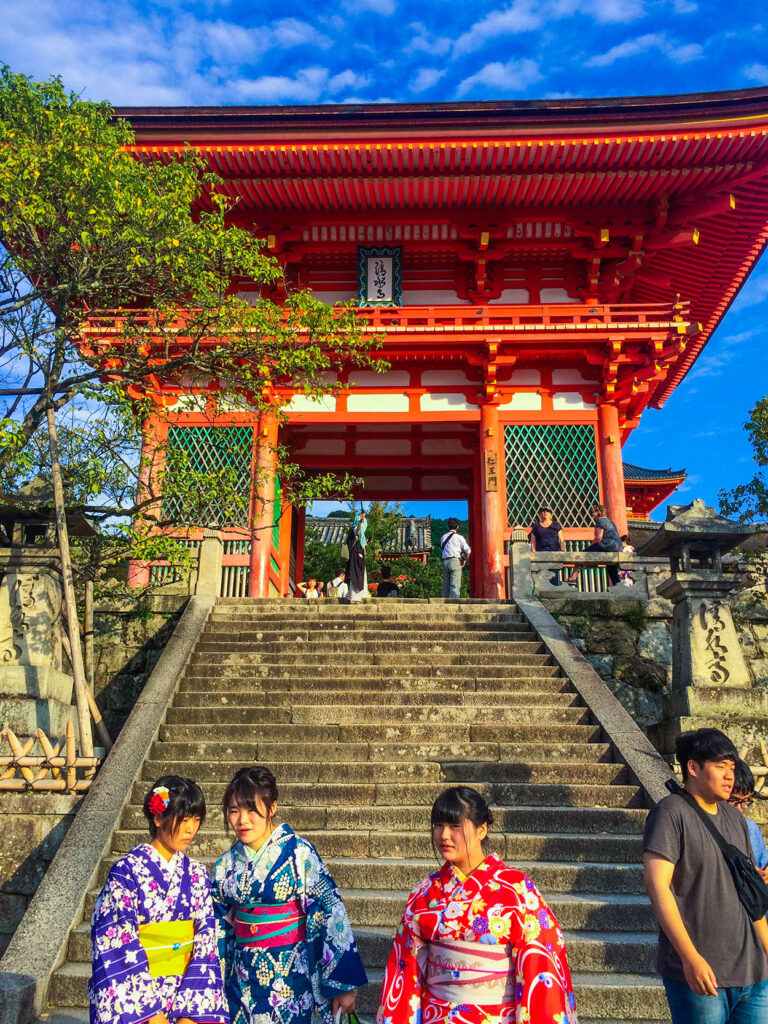
Access
Kiyomizu-Dera is best reached by bus from Kyoto station. Hop on bus number 100 or 206. The journey takes about 15 minutes and costs 230 yen for the one-way ride. Jump off at Gojo-zakat or Kiyomizu-michi bus stop. The rest of the trip to the temple is on foot, walking uphill along Higashiyama.
Hours & Admission
The temple is open every day from 6:00 am to 6:00 pm from October to April and from 6:00 am to 6:30 pm from April to September. The admission costs 400 yen. During the Spring and Fall, they have a special event where they illuminate parts of the temple with lights. During this festival, the temple is open from 6:00 pm to 9:00 pm. It costs an additional 400 yen to enter to see the spectacle.
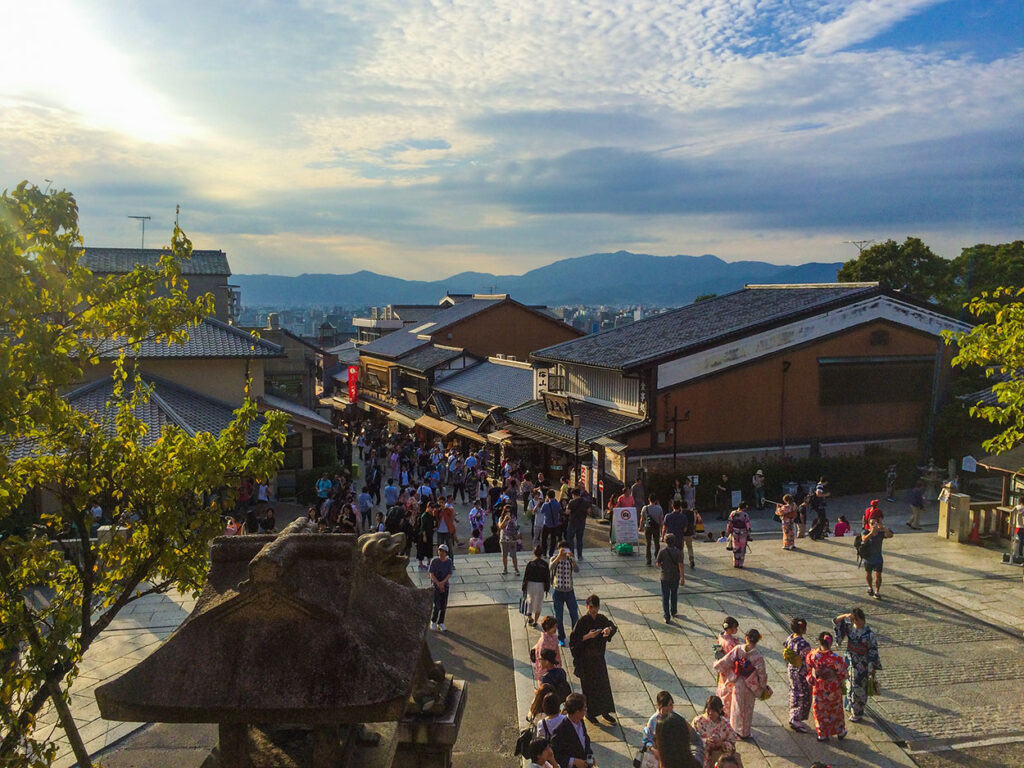
History
Kiyomizu-Dera was founded here in 778, but most of the buildings you’ll see today were built in 1633. In 1994, the temple was added to the list of UNESCO world heritage sites. It was nominated (although lost in the end) to become one of the New 7 Wonders of the World.
The name ‘Kiyomizu-dera’ comes from the waterfall which flows through the grounds since the word ‘Kiyoi mizu’ means pure water. The waterfall trickles down from the mountains and breaks into three streams at the shrine. Each of the streams is known to endow the drinker with a particular benefit; life longevity, success at school or happy love life. Long poles with cups attached to the end are provided for people to drink the water. It is thought to be greedy to drink from all three, and one must choose their greatest desire and drink only that one stream.
Hike up Higashiyama
To get to Kiyomizu-Dera, you begin with a ten-minute hike uphill along Higashiyama. The walk-up Higashiyama is part of the entire experience of Kiyomizu-Dera. These shops along the route have served pilgrims who came to pray at the shrine for hundreds of years.
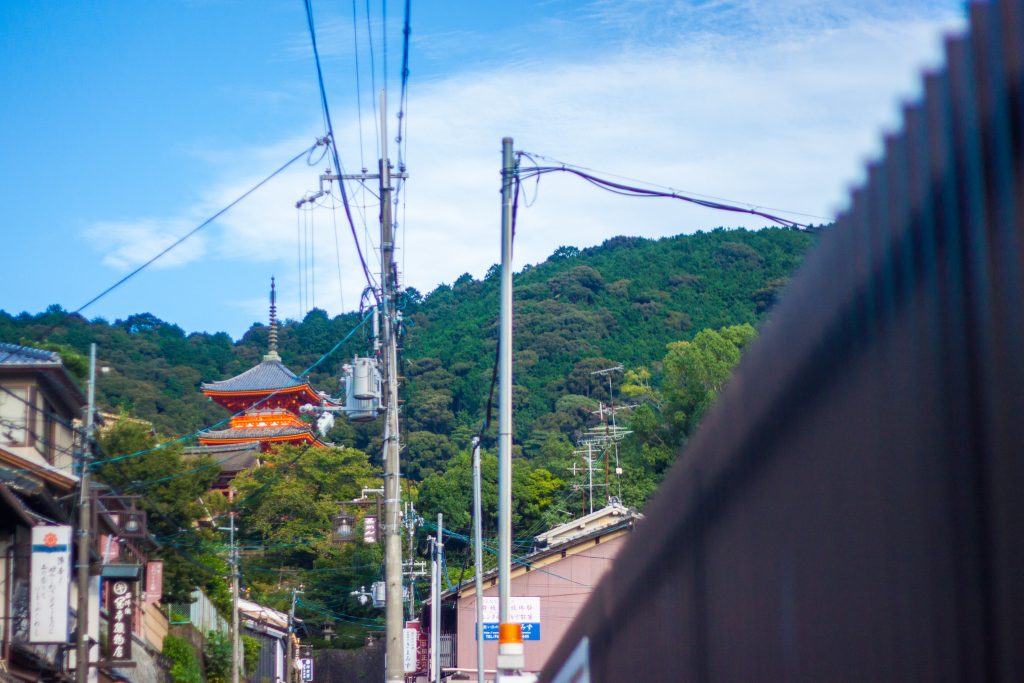
These buildings are ancient and look like they’ve stood in the same place since the temple’s construction. Although the hordes of tourists, Pokemon t-shirts and Hello Kitty hats might take you out of the historical mindset, don’t let that spoil your experience. Focus on the old signage, the cracked old roofs and the kind faces of women who’ve served travellers for ages.
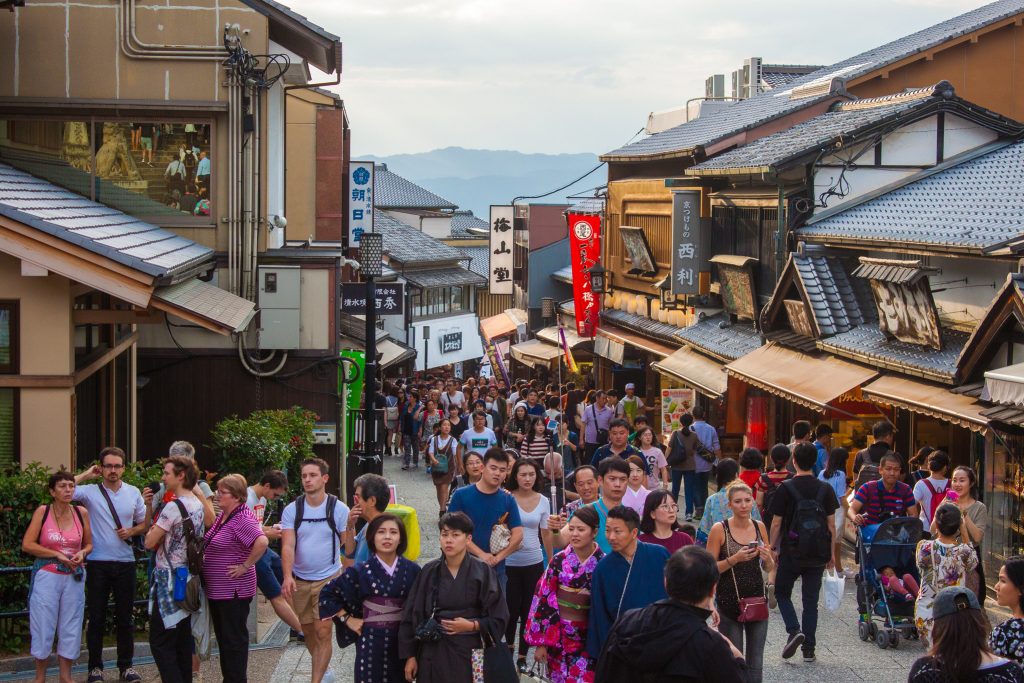
Nama Yatsuhashi
A favoured treat to get is the Nama Yatsuhashi. This dessert is made from mochi pounded into a smooth dough with a sweet filling sandwiched and shaped into a triangle. The fillings include bean paste, strawberry, blueberry and green tea. One of the few safe treats for those who have Celiac disease or are gluten intolerant.
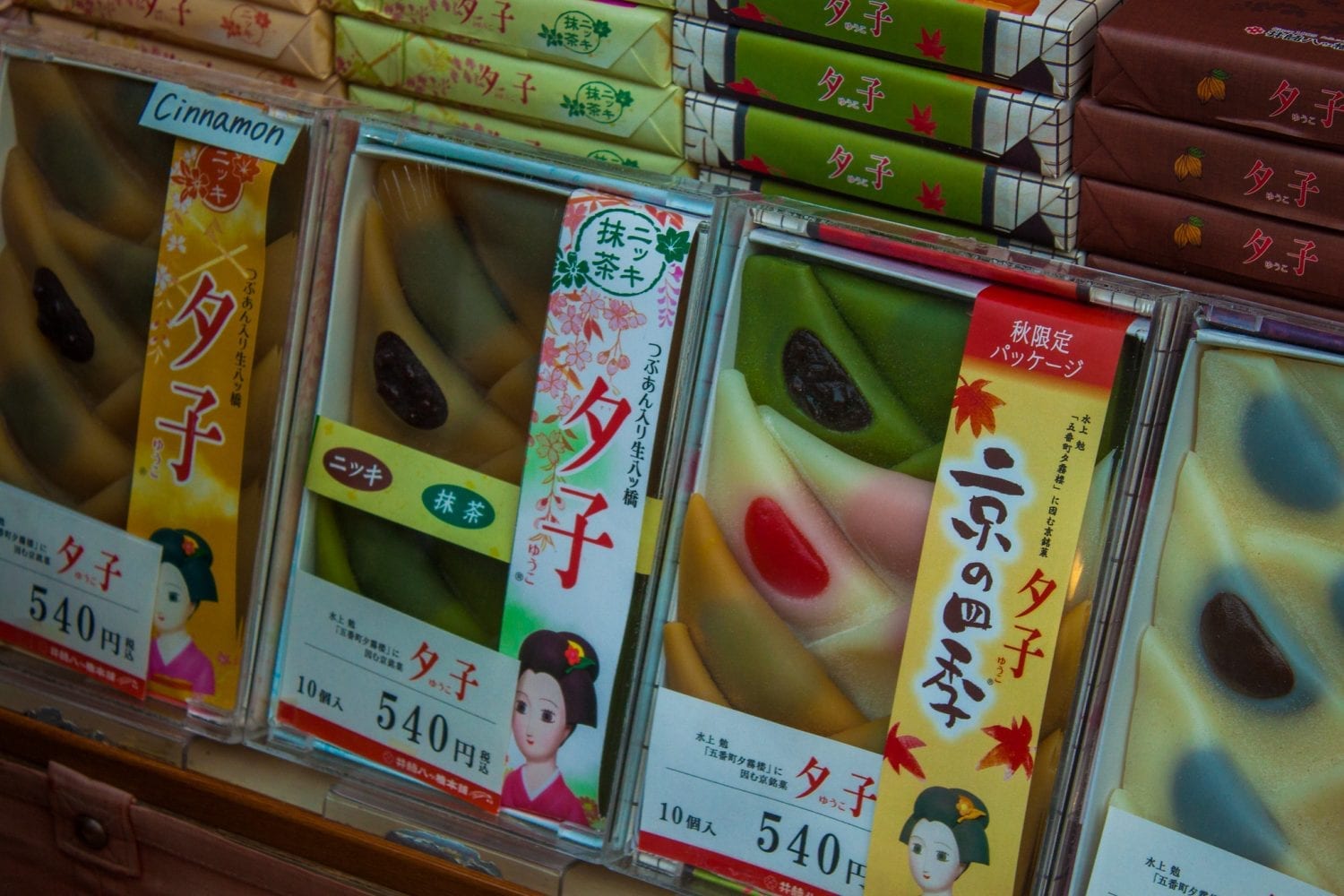
Shopping Along the Way
The shops on Higashiyama carry local specialties like pottery, textiles, housewares and handmade crafts. The fan shops along the street sell traditionally made Japanese fans from local artisans, the perfect piece of decor to take home that’s easy to pack!
Niō-mon Gate
When you finally reach the temple, you’re first greeted by the giant “Niō-mon” gate. The gate was originally built in the late 15th century but refurbished in 2003. The bright vermillion colour, which was used since vermillion represents life and eternity, stands out against the bright blue sky. It feels as though it is almost glowing!

Nio
On either side of the gate are two massive wooden warriors hidden behind the green lattice. These soldiers are called “Nio” (the two kings), and the entrance is named after them. As you walk up the stairs, you will also pass two stone Lion dogs who also serve as guardians of the temple.

In front of the gate are a series of bright green bushes surrounding the temple’s base. Many women dressed in stunning kimonos stand here, posing as their families take pictures. The bushes hid the temple’s foundations and allowed the shrine to feel as though it simply sprouted from the earth.
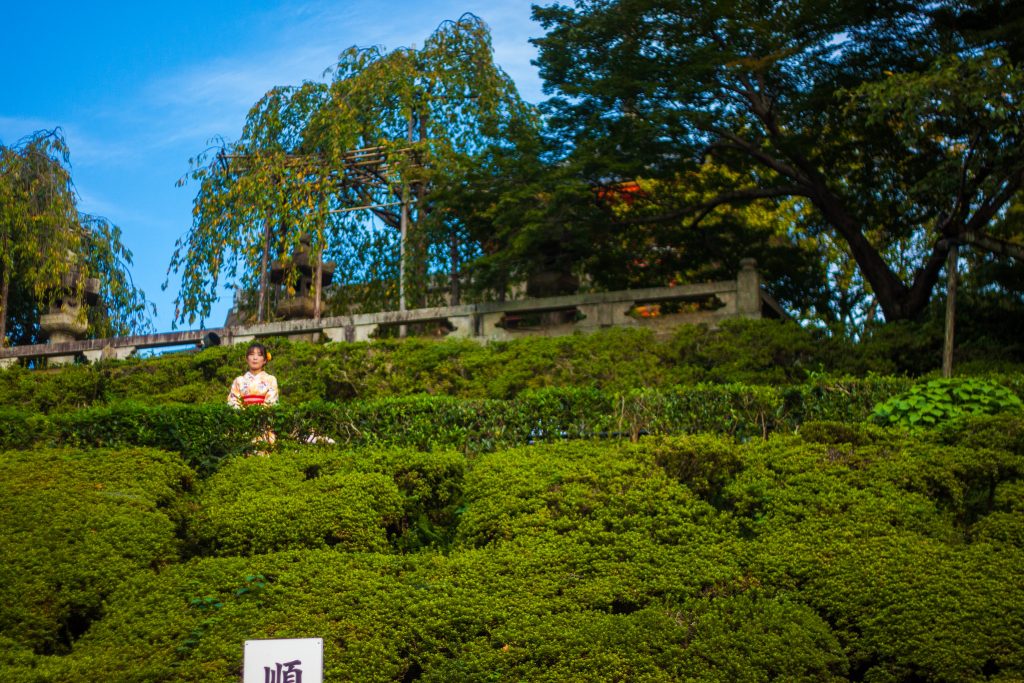
Koyasu Pagoda
At the top of the stairs lies the vermillion, three-storied Koyasu Pagoda. Visitors who come to the pagoda and pray here are said to be blessed with safe childbirth and happiness for their children. The different layers of the pagoda fan out like wings against the sky.

Shoro
Beside the pagoda, you can also see the “Shoro” (or belfry) with a time-worn bell cast in 1478. The dazzling paint on all the structures is so impressive. One can only imagine the awe it would instill in the viewer coming here in the Edo period.
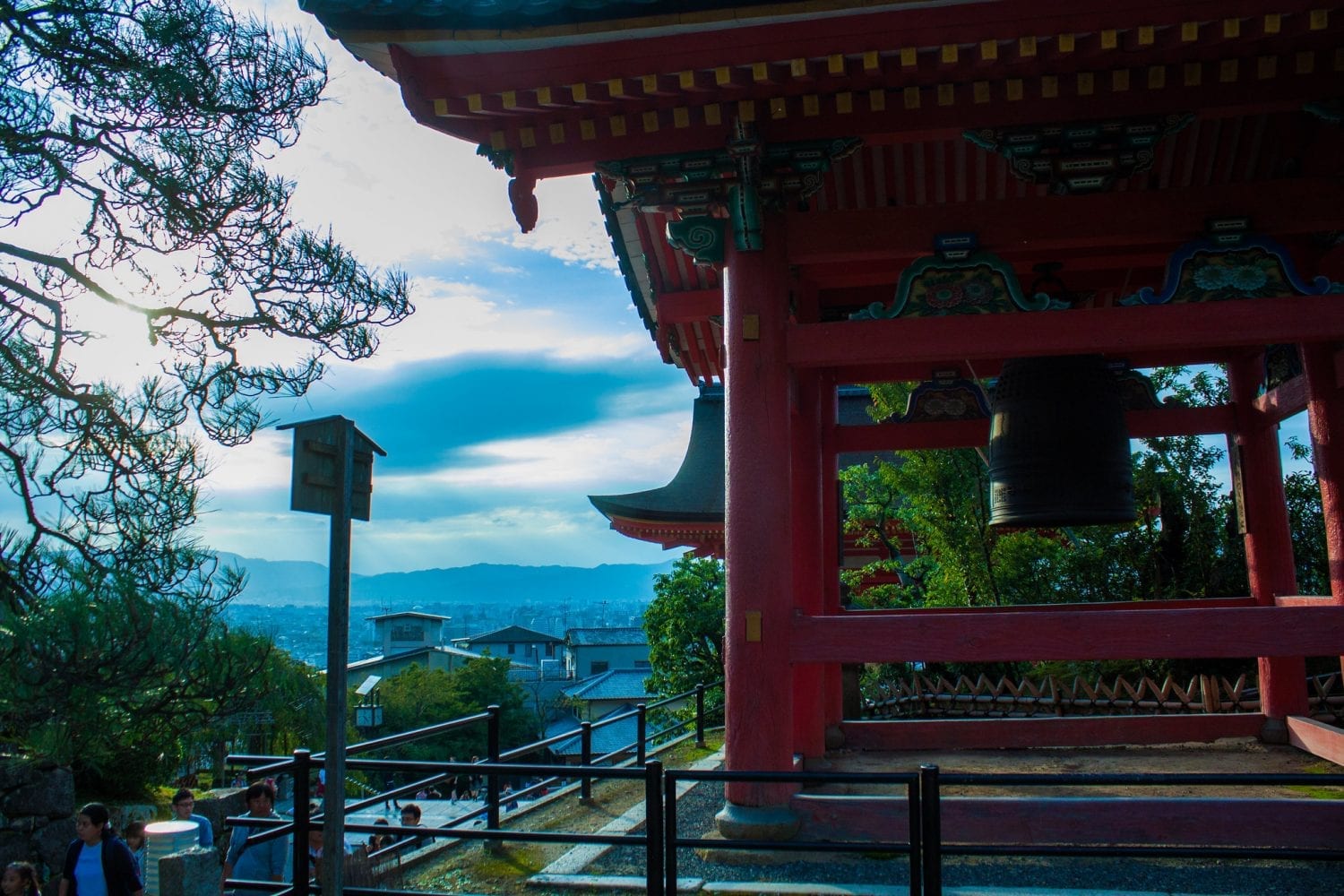
The Main Hall
The Main Hall is the biggest draw of the temple. The hall was built without a single nail. Its wooden veranda juts out 13 meters over the forest floor below, with an unrivalled view of the city below.
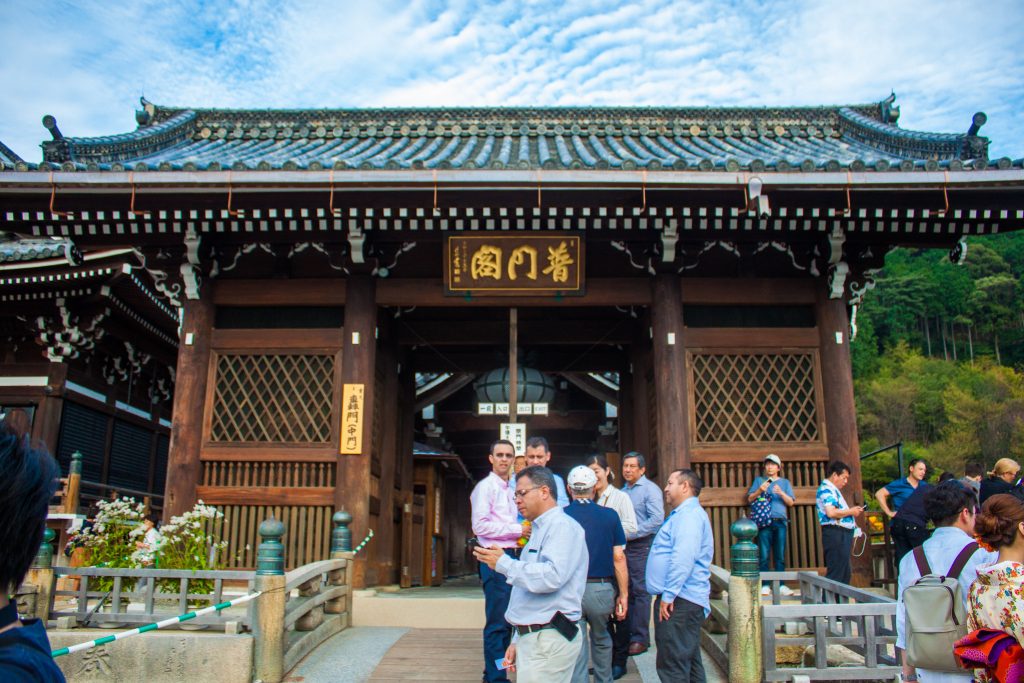
When the sun goes down, this is one of the best times to be on the veranda, as the city’s silhouette against the setting sun is spectacular. In Kyoto, an expression says, “to jump off the stage at Kiyomizu.” Which is like the English phrase “to take the plunge.” In the Edo period, people would jump 13 meters from the veranda to the ground. If they survived, their wish would be granted by the gods as a reward for their bravery. Surprisingly enough, 85% of the people who jumped survived, but the practice is banned today.
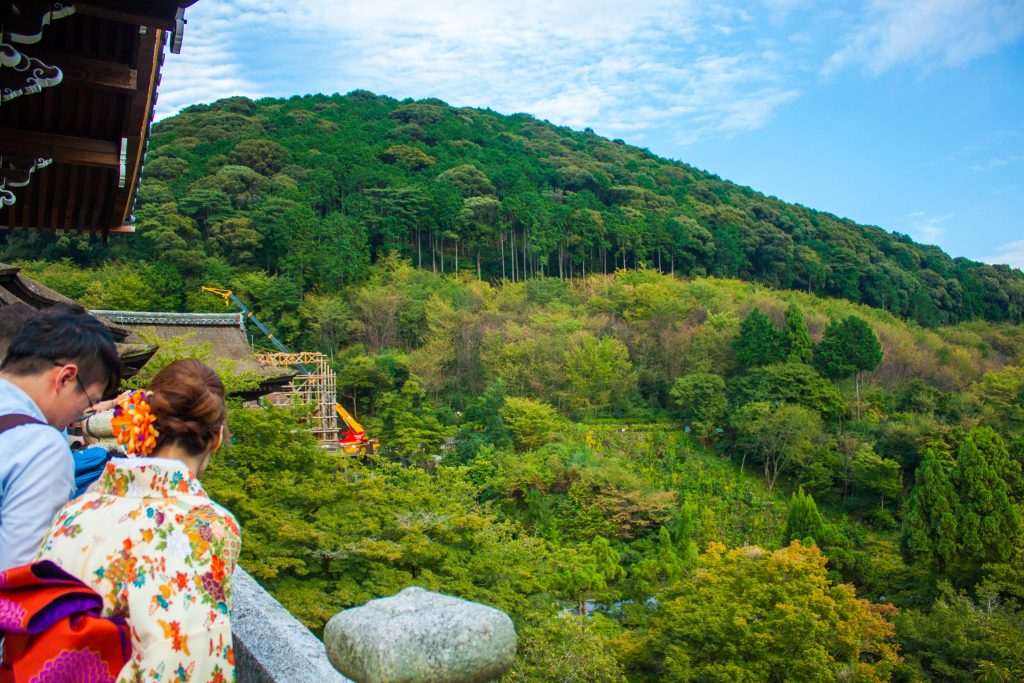
Zuigudo Hall
Behind the main hall, we can find the Zuigudo Hall. This building is dedicated to Buddha’s mother. Inside you must wander through a pitch-black basement which is thought to symbolize the womb.
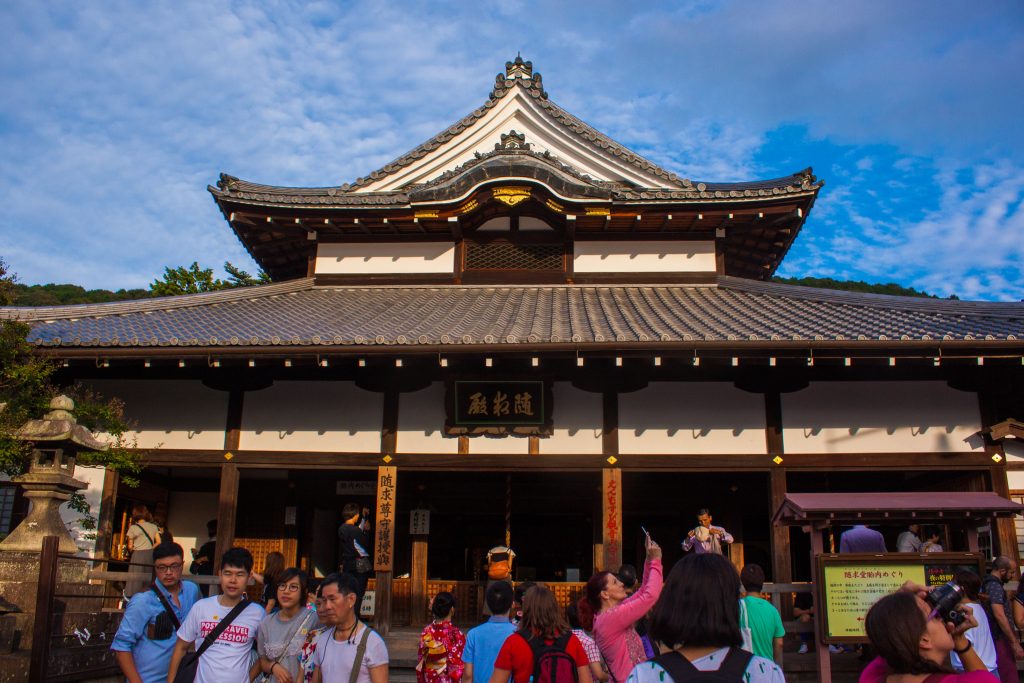
Jishu Shrine
Behind Kiyomizu-Dera, you will find an equally famous spot, the Jishu Shrine. This shrine is dedicated to the deity of love and matching making, so singletons worldwide will come here to pray for their true love.
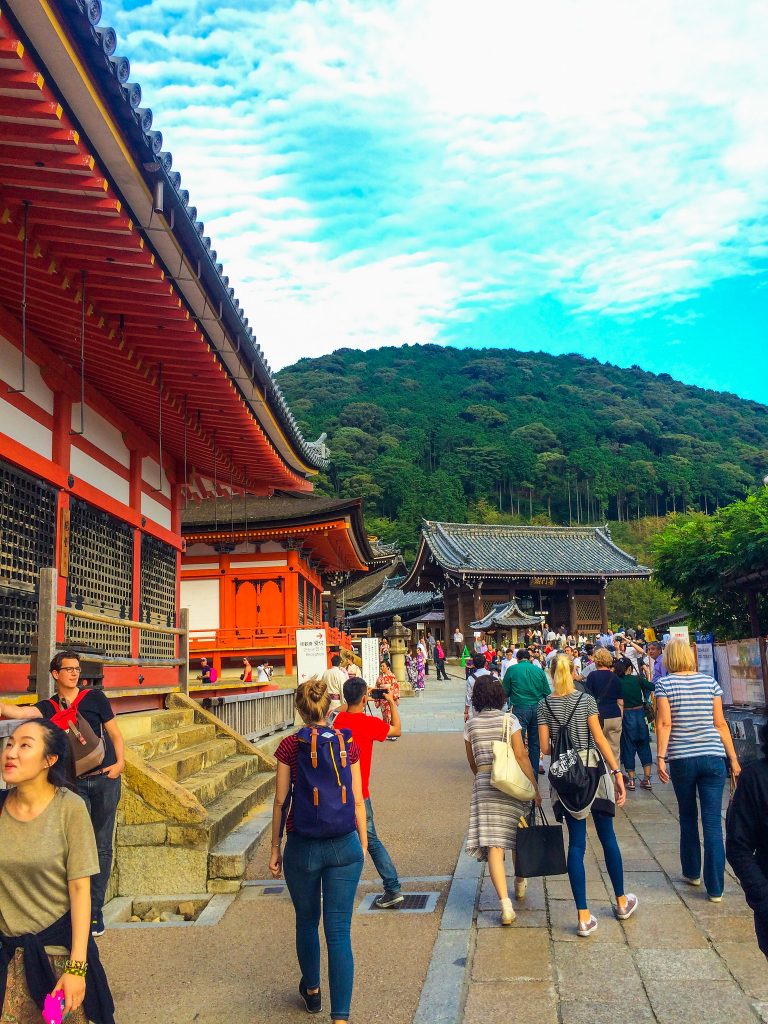
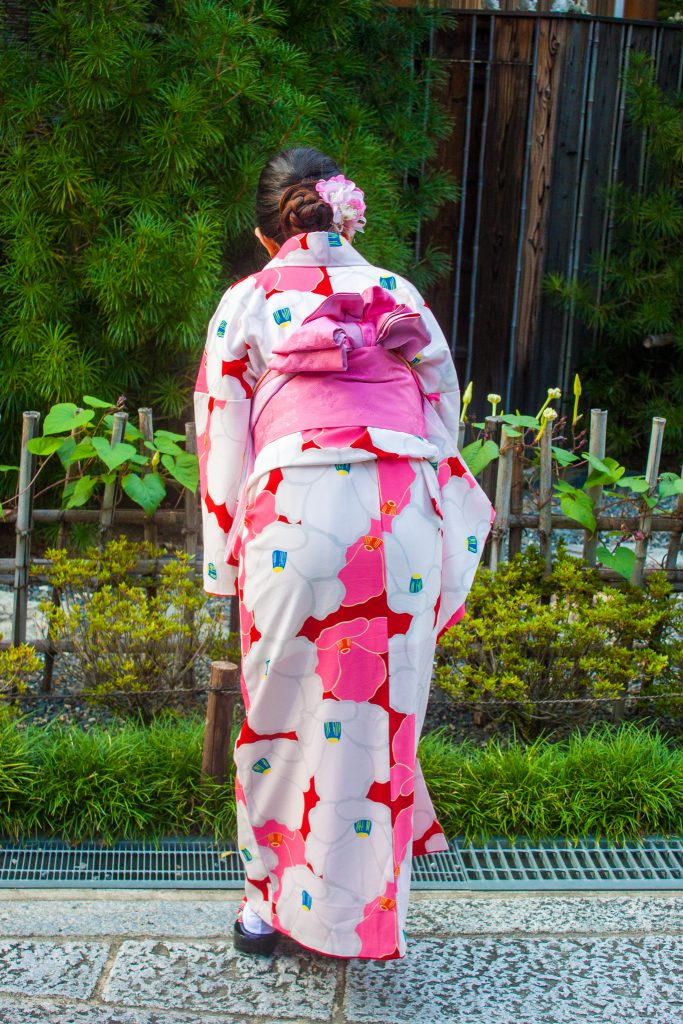
In front of the shrine are two large stones placed 18 meters apart. The person looking for love is blindfolded and must walk from one rock to another. If you need help finding the other stone, that means you will need help from someone else to find your true love in your future life.
Shaka Buddha
One of the smaller halls towards the back is dedicated to the Shaka Buddha, and surrounding the perimeter of this shrine are over 200 stone statues of Jizo, the protector of children and travellers.
Just wandering through the temple is a transcending experience. The intense colours of the buildings and the even brighter coloured kimonos worn by visitors make the entire space feel like a moving art gallery.
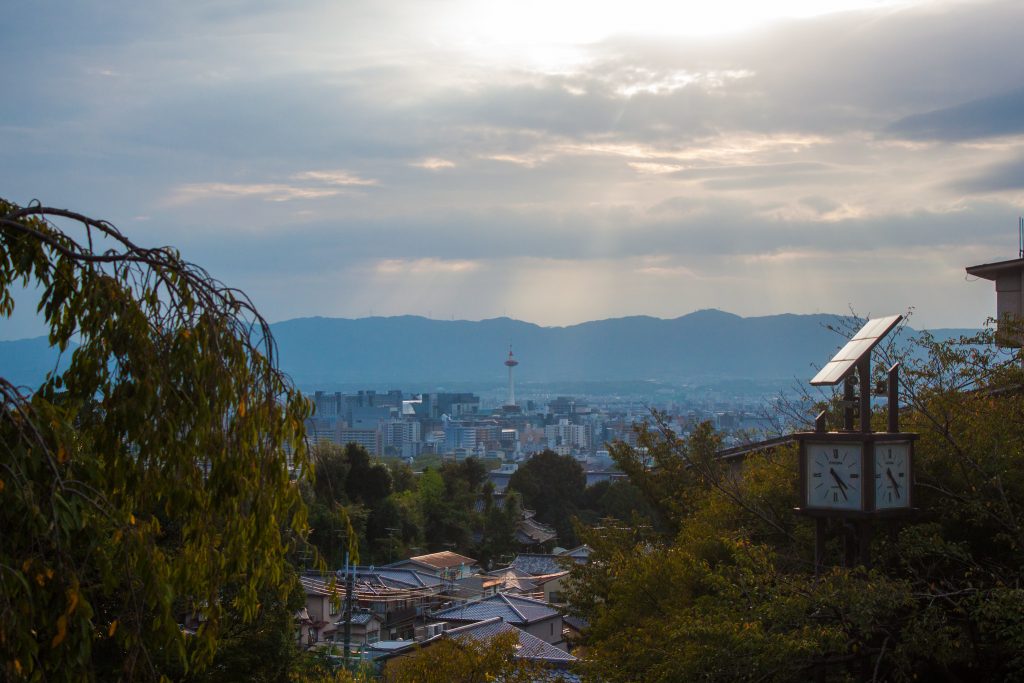
There was nothing like being up here as the sun began to set and seeing the city of Kyoto from high above. Although it’s a bit of a trek and the number of tourists might seem daunting, this is truly one of the most spectacular sights in Kyoto. When there are so many temples and shrines, it’s often difficult to know which ones are worth seeing, but this one is easily one of the best.
What was your favourite temple in Kyoto? Let me know in the comments!
Happy Travels Adventurers
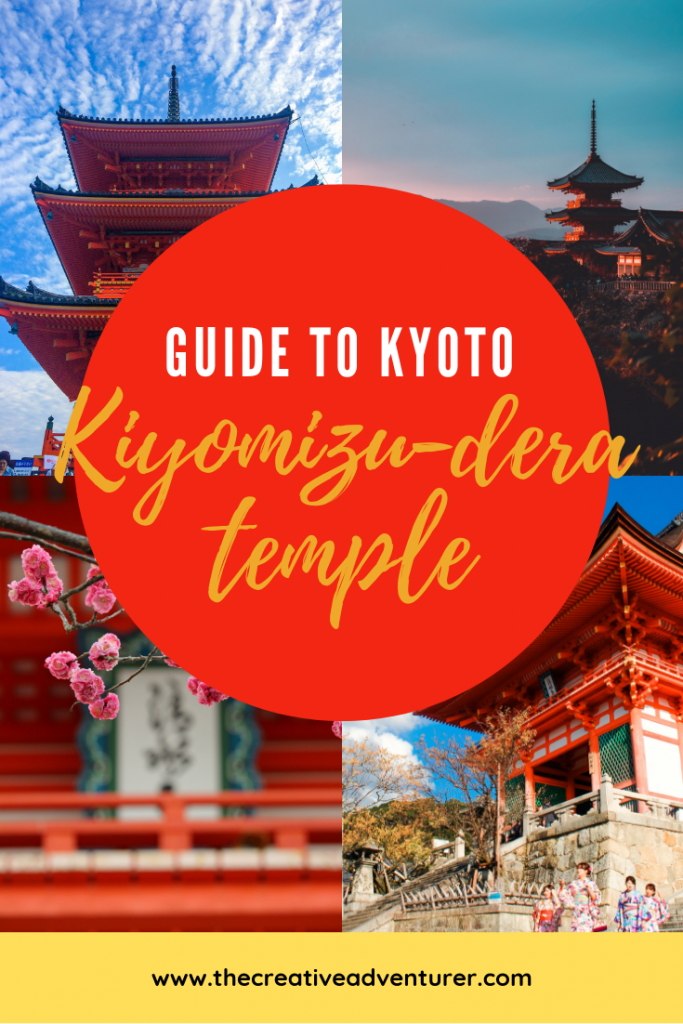
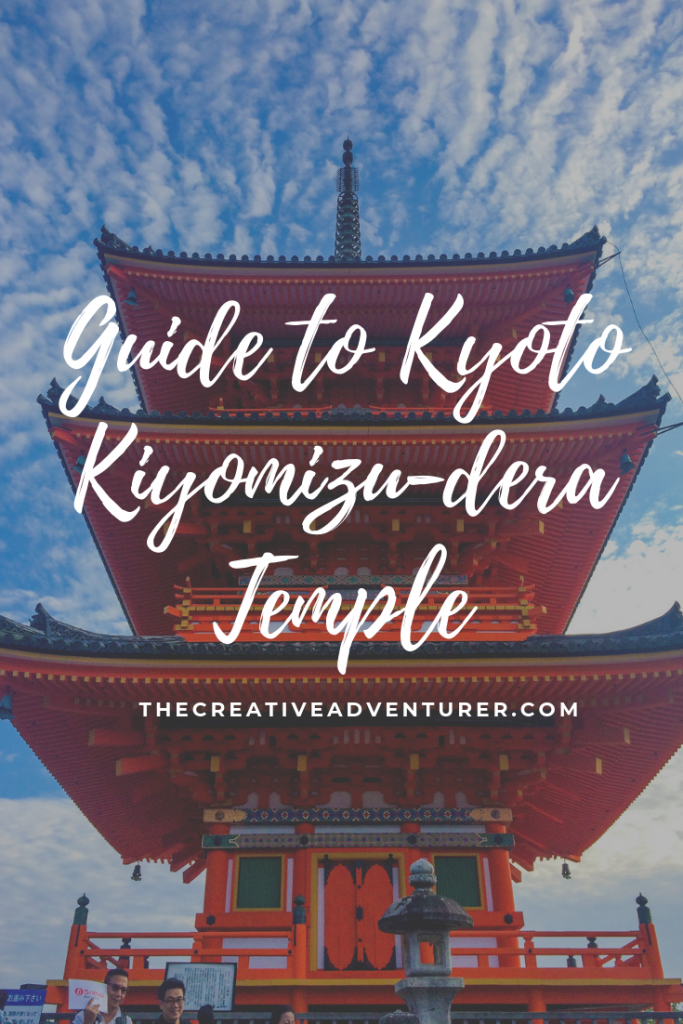
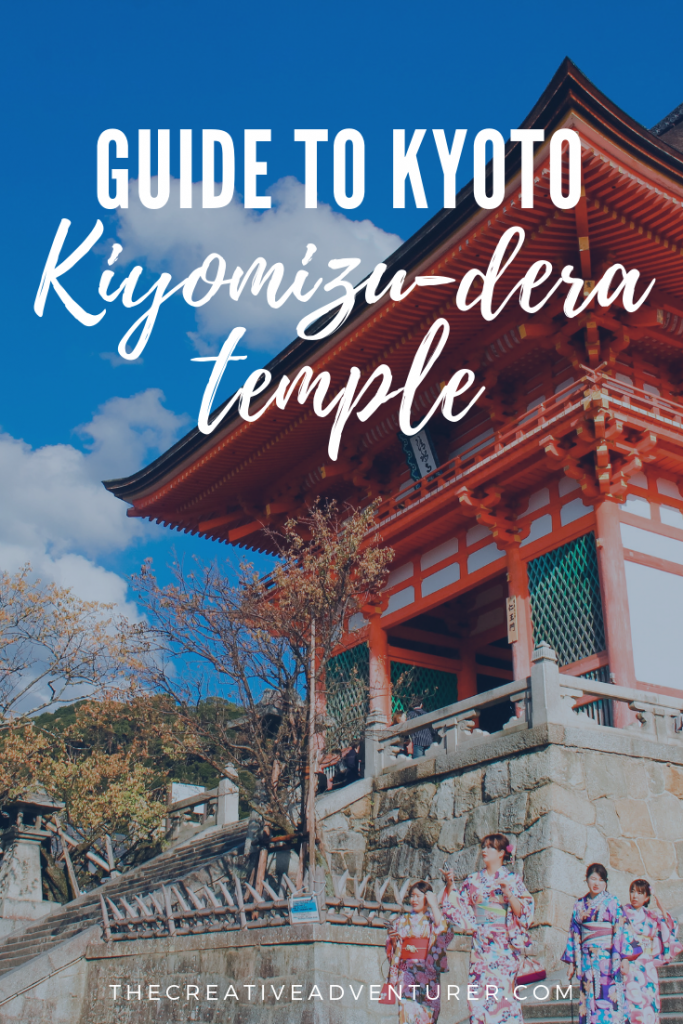


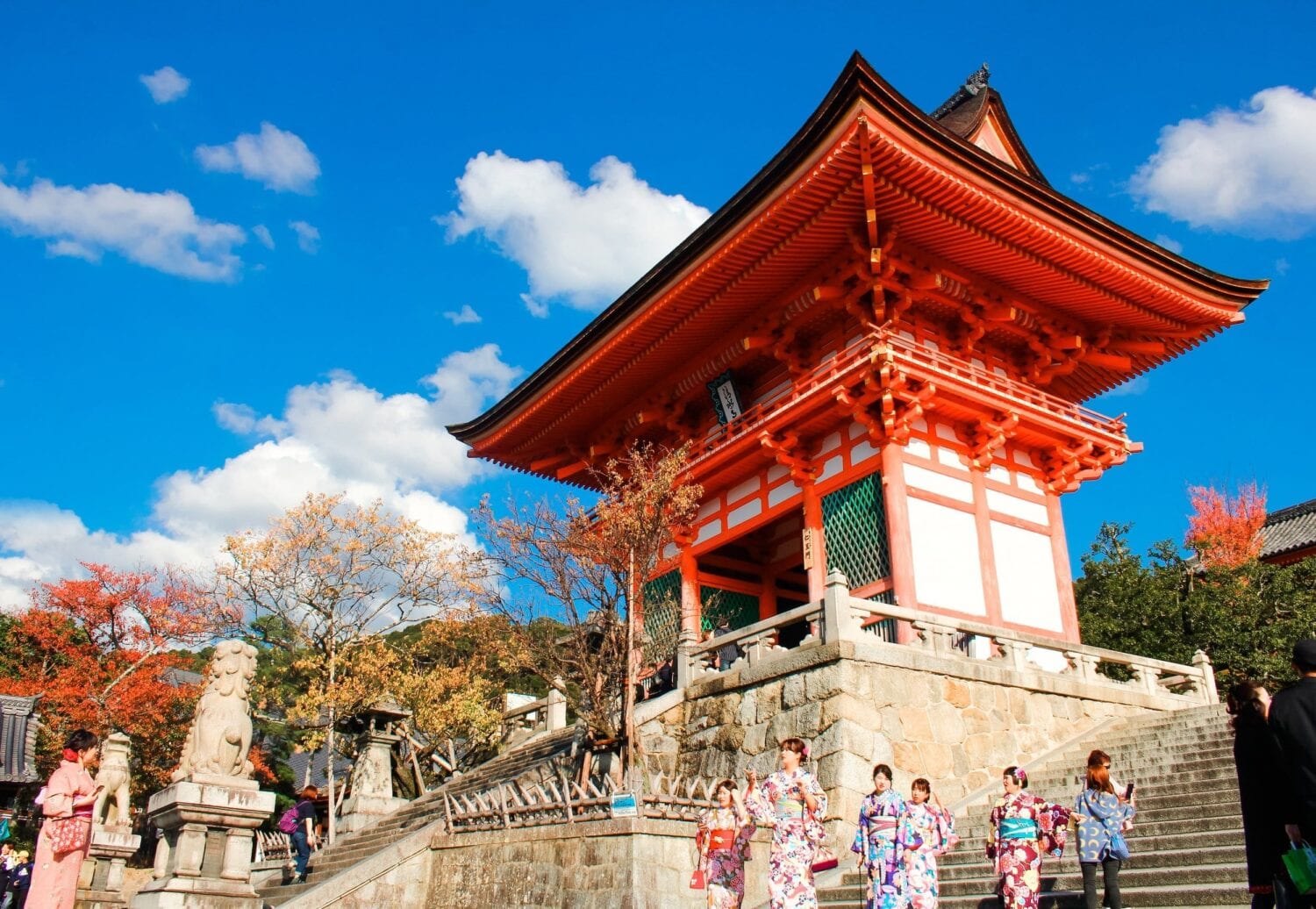
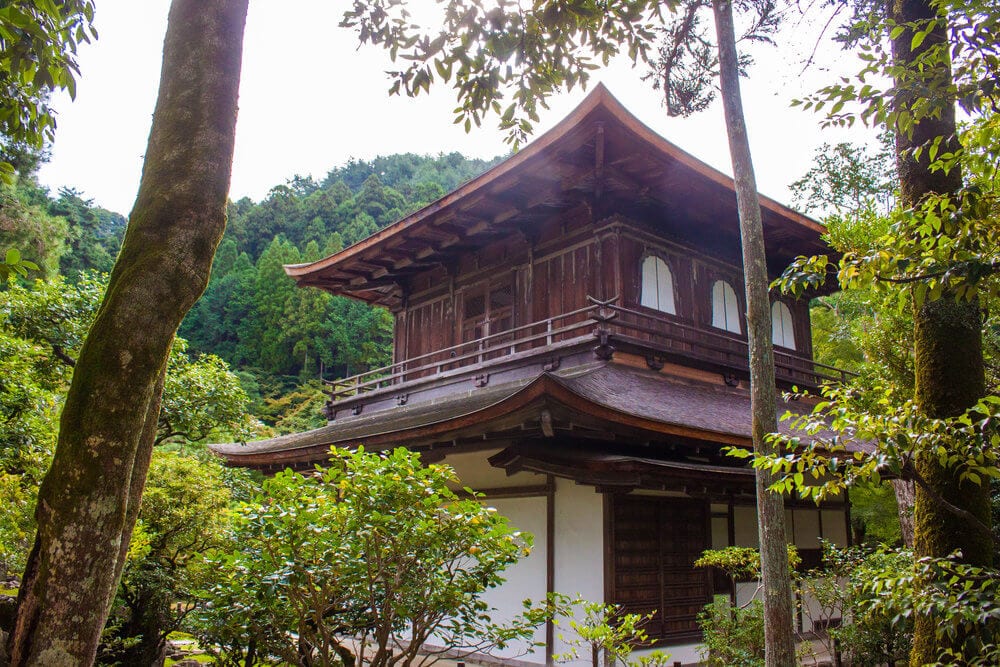
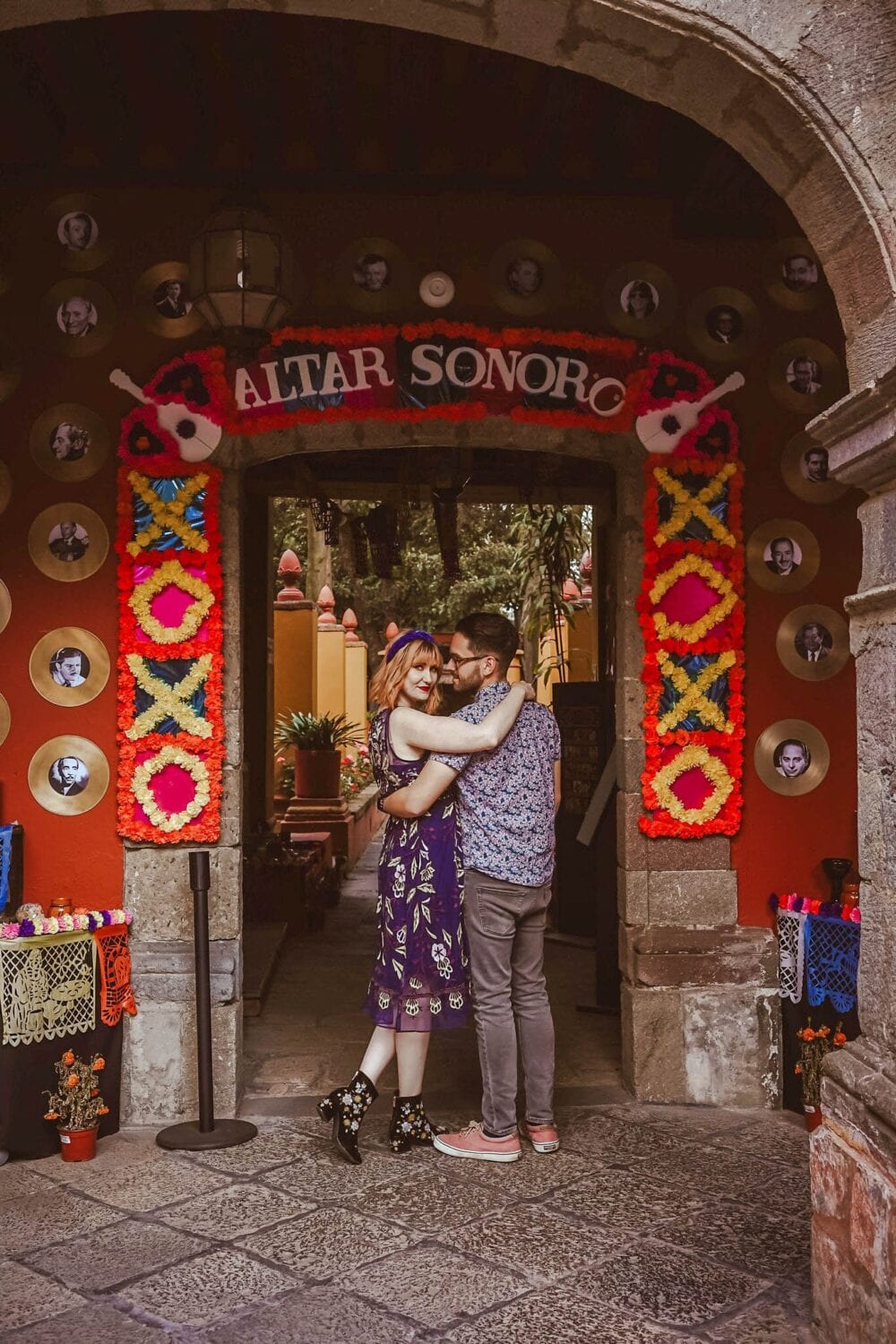
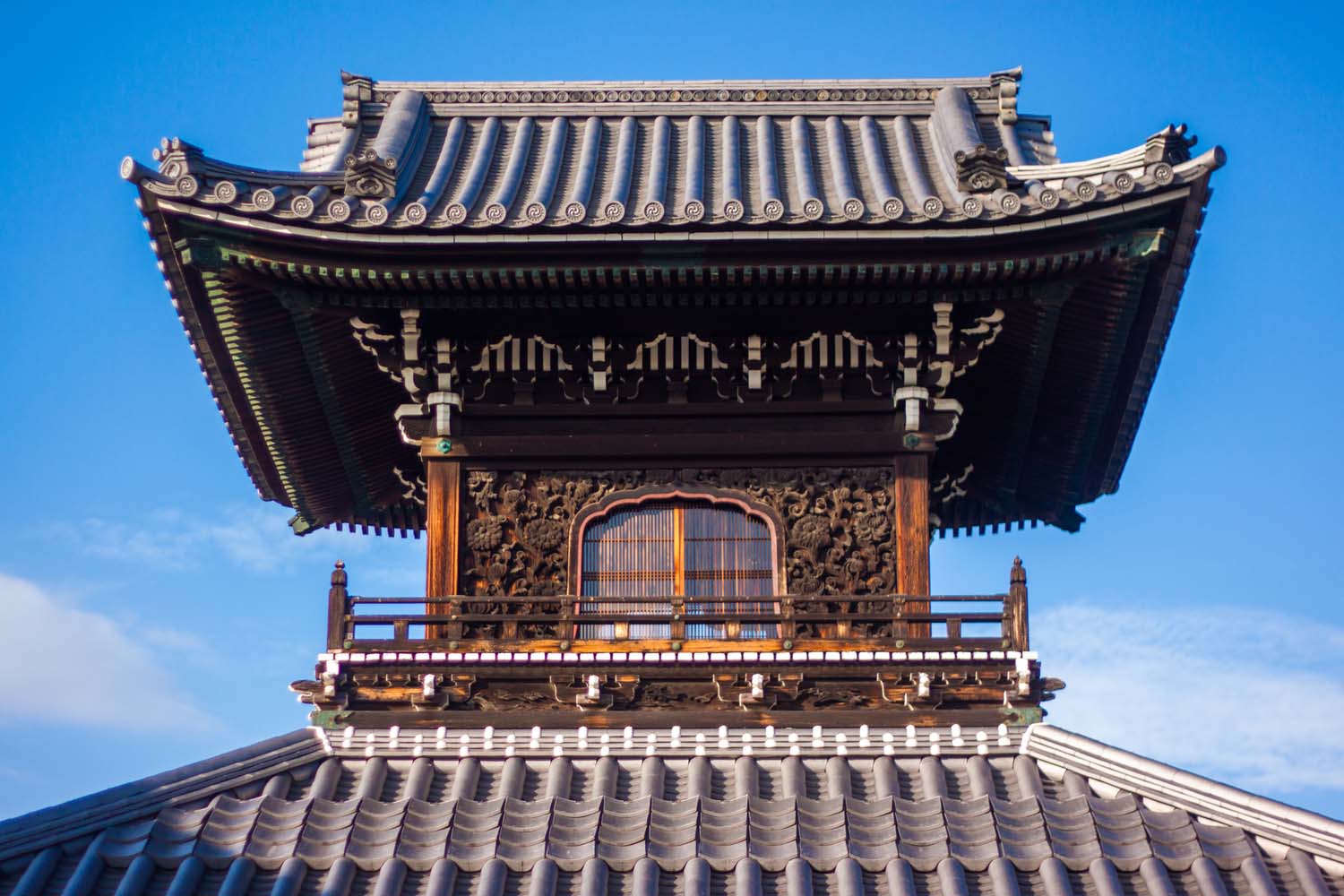

Leave a Comment